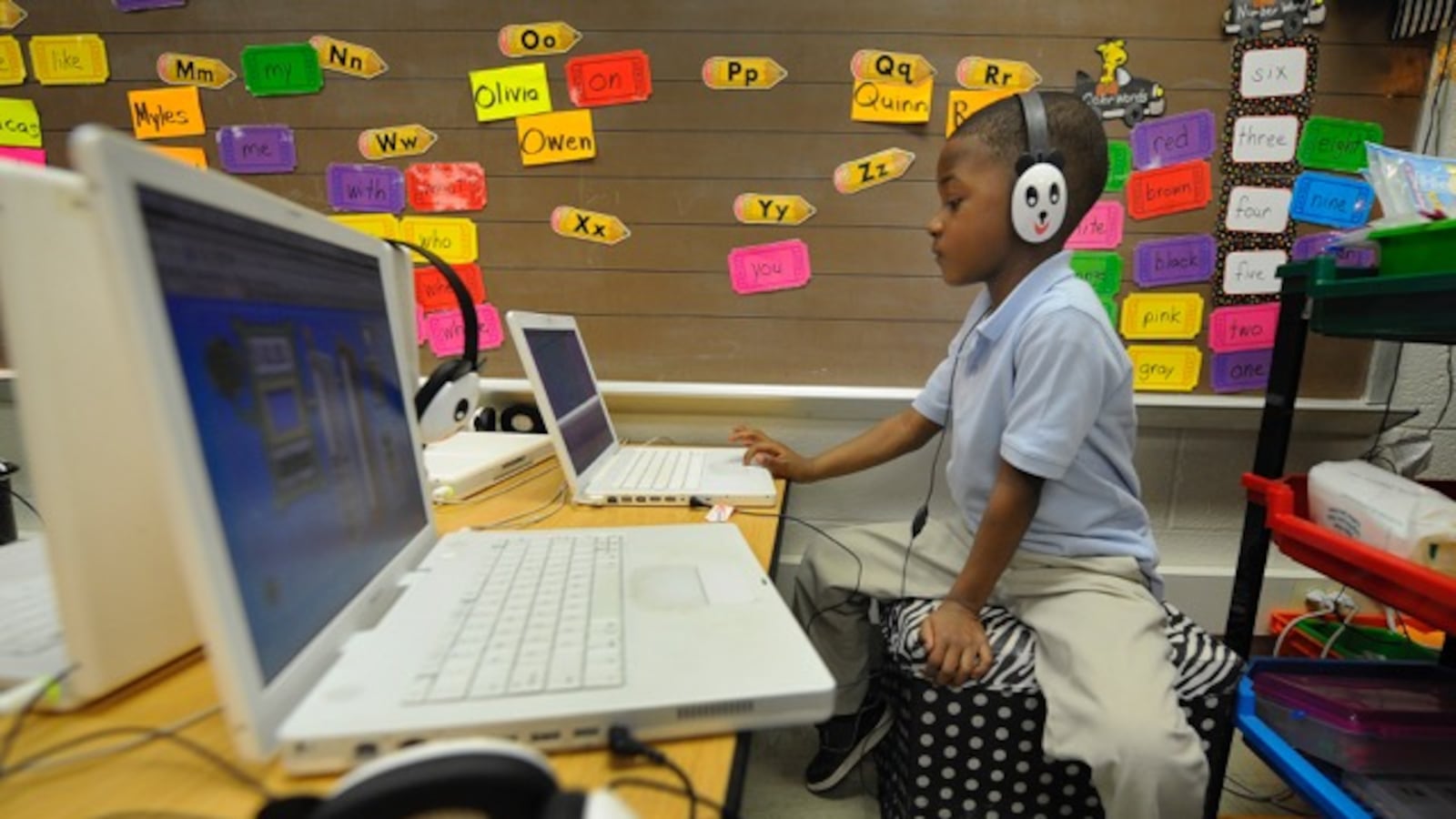Students at Paramount Schools of Excellence spent much of last year doing school work on computers, instead of with paper and pencil. It marked a dramatic shift for the charter network, as it aimed to get children ready for the state’s new computer adaptive test.
It was essential experience for many students who come from low-income families and aren’t immersed in technology at home, said Tommy Reddicks, Paramount’s CEO.
That practice may have helped Paramount, a growing eastside charter network known for posting strong test results. Its newly opened Community Heights campus had one of the highest ILEARN passing rates in the state, with 76.7% of students passing both the math and English sections of the exam. Because the campus is still small, however, just 30 students took both tests in 2019. Its sister school, Paramount Brookside, had one of Indianapolis’ highest passing rates, 56.2%. Still, it was down about 24 percentage points compared to 2018.
“It is a much harder test,” Reddicks said. “I think the whole state is struggling to find value with scores that are coming in so low, when so much of our identity is tied to those scores.”
Results on state exams plunged in 2019 — with a statewide passing rate of 37.1%. Just four Indianapolis public schools had higher passing rates in math and English on ILEARN than they had last year on ISTEP, the prior test. About 180 public schools saw passing rates fall — many by percentage points in the double digits. (Indiana students in grades 3-8 took ILEARN for the first time this year, while high schoolers will continue to take ISTEP for the time being.)
It appears increasingly likely, however, that the low passing rates won’t have significant consequences for most schools and teachers. Although the scores were released Wednesday, news of the dramatic declines has been seeping out for days.
With the results looming, politicians including Gov. Eric Holcomb and State Superintendent Jennifer McCormick have called for Indiana to hold schools and teachers “harmless” by preventing them from being negatively impacted by low ILEARN scores.
Passing rates fell at districts across Marion County. The highest passing rate was in Speedway, an A-rated district, where 50.9% of district students passed both the math and English exams. In Franklin Township, which had comparably high performance last year, passing rates fell to 44%.
In Indianapolis, the traditional school with the lowest passing rate is Arlington Middle School, an Indianapolis Public Schools campus where just one student passed both sections. Districtwide, the passing rate on ILEARN was 13.8%, about 10 percentage points lower than the passing rate on ISTEP last year.
Indianapolis Public Schools Superintendent Aleesia Johnson said the district is not pleased with its state test results. But she also said the declines don’t track with data the district has been collecting from assessments it gives to students throughout the year, which show progress.
“It is also frustrating as district leaders and for our families to be on this sort of roller coaster of shifts in state assessments,” Johnson said. Increasing distrust in the results from the state test make it hard for schools to learn from the scores, she added.
The state test results are of particular significance, however, for the six struggling schools that were overhauled and became innovation schools, with management handed over to outside charter operators. The controversial strategy, which began four years ago, aims to turnaround some of the city’s lowest-performing campuses. In prior years, some schools restarted with innovation partners saw large gains.
But this year, none of those schools had ILEARN passing rates above 6 percent. At the first failing school to be overhauled, Phalen Leadership Academies at School 103, the passing rate fell to just 2.1%. Officials from Phalen did not return a request for comment.
Indianapolis Public Schools continues to have wide gaps in the passing rates for students of color and children from low-income families, compared to their white and middle class peers. Those gaps show up in both state exams and the district’s own assessments, Johnson said.
“It’s important to continue to be really focused on our work around racial equity, and closing the gap, because those held true no matter which assessment you looked at,” she said.
Similar to last year, schools across Marion County have large and persistent gaps in passing rates for their most vulnerable students, including in some of the city’s higher-performing districts. In Washington Township, for example, 66.6% percent of white students passed the test, 38.5% percent of multiracial students passed, 18.6% percent of Hispanic students passed, and 18.4% percent of black students passed.
As the largest district, Indianapolis Public Schools often draws wide attention, said Brandon Brown, CEO of The Mind Trust, an influential non-profit that supports charter schools, but townships also have significant disparities.
“As a community, we need to acknowledge that there are significant gaps across the county,” Brown said. “I don’t think township districts should be off the hook for the performance of their students.”
Emma Kate Fittes contributed reporting.

